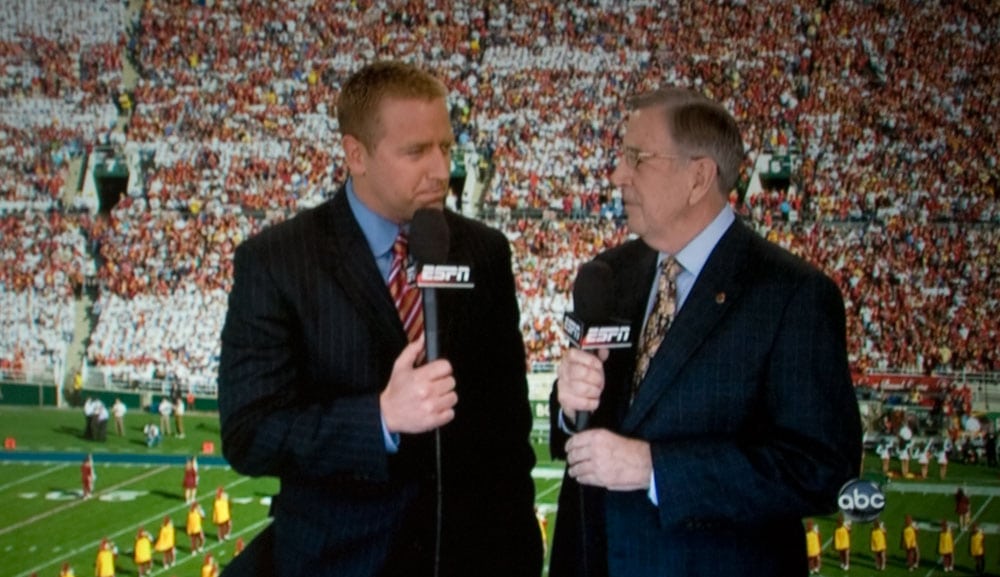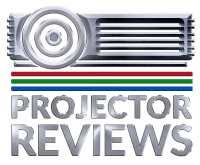Since the Optoma HD20 home theater projector is the first sub-$1000 projector we've received to review, all the comparisons currently listed below, are for projectors that have street prices typically between $400 and $1500 more.
We are expecting two other $999 projectors - one from Vivitek and one from BenQ - to start shipping in the next month or so. Once we have reviewed them you will be able visit those projector's "competitor's sections" to find out how the HD20 stacks up against them.
It's tough being the HD20, and having to go up against projectors hundreds, or even more than double its price. Try to keep perspective - I see the HD20 as an excellent value for the price. Think Toyota Corolla, going up against Camry, Accord, and even the BMW 1 and 3 series.
HD20 vs. Epson Home Cinema 6100 and 6500UB
OK, let's get the 6500UB out of the way. It sells for 2.5 times the price of the HD20. For that, you better demand a lot more performance. The thing is, the Epson (my personal favorite at its price point) delivers. Black levels are outstanding on the Epson (only bested by 3-4 projectors mostly over double its price). The Optoma will have an advantage in shadow detail, but if you were to see dark scenes on both, well, does the expression "night and day" mean anything to you?
Let me put it this way. The 6500UB is exactly the kind of projector someone starting out with an HD20 might want if they find themselves hooked and want to move up significantly without spending $4000 or $8000!
The HD20 has basic performance. It is, I should note, every bit the equal to the Epson on skin tones, and overall color, and I might even give it the slightest edge on having a more natural look and feel to the image.
 Click Image to Enlarge
Click Image to EnlargeBut put up any mixed or dark scene, and the Epson will blow away the Optoma HD20.
And for your extra $1500+, you'll get a 2 year warranty complete with overnight replacement service, vs. the HD20's standard one year warranty. Of course, as a 3LCD projector, the Epson's placement flexibility is about as good as it gets, and the HD20 is classic DLP and therefore very limited in placement.
NEXT:
The Home Cinema 6100 is Epson's entry level 1080p projector (though due for replacement this fall). It currently seems to be selling for a little less than $2000, but also comes with a spare lamp. Considering the lamp life of the 6100 is 4000 hours in brightest mode, that best's the Optoma's 3000 hours (both are 4000 hours in low power mode.
The Epson is significantly brighter than the HD20 in brightest mode, but, pay attention, the Optoma has almost 1/3 more lumens in best mode.
While the 6500UB is Epson's "ultra-high" contrast projector, the 6100 is no slouch. It's claimed 18,000:1 contrast is far better than the HD20's 3000:1 (4000:1 with ImageAI, but we recommend not using it). Epson uses a dynamic iris to get the better contrast, and it works. The Epson easily has better black level performance than the HD20, and it shares the same warranty, and placement flexibility as the 6500UB.
The Epson 6100 is a strong contender if your budget is a good chunk more than the Optoma costs. Once again, the biggest strength of the Optoma HD20 is it's rock bottom cost.
Optoma HD20 vs. Samsung SP-A600
Samsung brought out the SP-A600 as their entry level 1080p projector. Originally, when first announced they were planning on a price between $1795 and $1995, but, like other manufacturers, seemed very concerned about Optoma's announcement of a $999 projector. True, the Samsung has a slight edge in black levels, and probably a touch more refined image overall (close though), but the Samsung, if, when it ships this month (9/09) it holds to even the $1795 price, would have to be considered to not be as good a value as the Optoma and it's significantly lower price.
The Samsung has a few extra features, but, simply stated, I definitely favor the HD20 when price is considered. It's a solid DLP projector (I think I used the term "solid" in the review many times), but at $1800 or so, I like several other projectors more. By comparison, the HD20 comes close, without busting a tight budget. If I had to say which one area of comparison strongly favored the SP-A600, it wouldn't be the slightly better image, but the significantly quieter operation. The Optoma also has a longer life lamp!
Optoma HD20 vs. Sanyo PLV-Z700
OK, Sanyo's been doing deals, though I really can't stay on top of all the price drops, rebates, and free lamp deals in the industry. Still, it seems that the PLV-Z700 - a very nice 3LCD projector - is netting out to under $1500, so it's a fairly close competitor, at least in terms of price.
Like the Optoma, black levels aren't a strength of the Z700 (that's why they make the $2000+ PLV-Z3000). I have to give the Optoma a slight advantage in terms of skin tones and overall color. The Sanyo, being 3LCD, has the huge advantage in placement flexibility, with a 2:1 zoom and full lens shift.
The Sanyo also has two more mundane advantages, a 3 year warranty, and it is much quieter, in terms of fan noise.
The Sanyo's true "best" mode isn't a match for the HD20's, but it has two other "almost best" modes, most notably, Creative Cinema (which has all the special features engaged). With Creative Cinema, you'll still get better black levels than the Optoma, but it will be about 20% less bright. In brightest modes they should be roughly comparable, although if you push the contrast on the HD20 as mentioned elsewhere, the Optoma will have a slight brightness advantage there as well.
The Sanyo PLV-Z700 is a particularly sharp 3LCD projector but it is definitely no sharper than the HD20. You'll get a lot more features with the Sanyo, and slightly better picture performance, but again, you'll be spending at least a few hundred dollars more here in the US.
Optoma HD20 vs. BenQ W5000
The BenQ is on its way out (9/09), to be replaced by the W6000 (one of my next two reviews). There may be some great deals, but as of now, mostly the price is staying close to $2000, so it's another DLP projector that's twice the price. The BenQ W5000 was our Runner-up Best in Class winner in our annual 1080p comparison in March, in the $2100 - $3500 class.
The BenQ like the Sharp mentioned below has very good black level performance, but it also has very good shadow detail, has a razor sharp image, and is more flexible, with a longer throw zoom lens and lens shift so it can also be shelf mounted. It's a big projector, but one of my favorites. It just qualifies by my definition, as one of the "ultra-high" contrast projectors.
The HD20, however, is not without strengths. It has more lumens in best mode, and about the same in brightest mode, and a longer life lamp. Both have 1 year warranties.
Optoma HD20 vs. InFocus X10, Sharp XV-Z15000, Viewsonic Pro8100
Both of these projectors are a step up (or more) from the Optoma HD20. The X10 which is being phased out, is probably a great deal at the moment, but still likely to be close to $2000. The Sharp is also around that price.
Simply put, the InFocus should have a slight, but side-by-side noticeable advantage in black levels, it also has better overall color - always an InFocus strength. The two should be about comparable in terms of shadow detail, and the X10 should be a little quieter in operation.
The Sharp XV-Z15000, which we reviewed a few months back, is one of my favorite DLP projectors. It too has really good color (I'd give the InFocus the edge), comparable to the Optoma. Both produce that pleasing image. Where the Sharp has its big advantage is black levels, where it is significantly better than the Optoma (or InFocus). The Sharp does really well at blacks. If you favor DLP projectors and are spending more, I really like the Sharp.
Then, there's the Viewsonic - which started out a year plus ago as an under $5000 projector with a few extra bells and whistles. Recently, though, the price has plummeted to less than $2000, as they have dropped price and made it available online. While I wasn't a big fan of the Pro8100 at it's original price, it's another good projector right now for well under $2000. It too would provide another higher performance choice, this time for probably $400 to $700 more.


